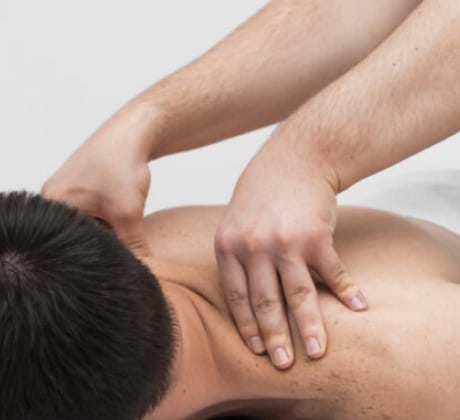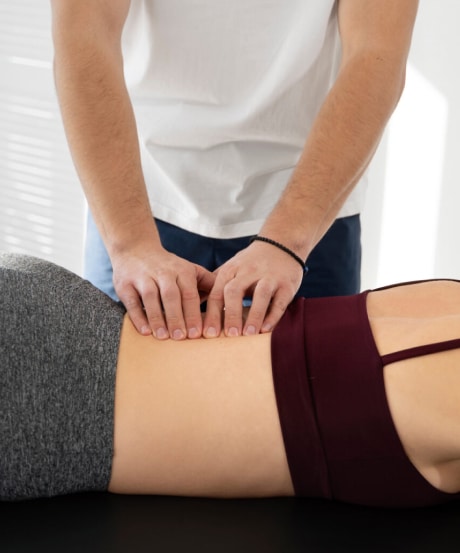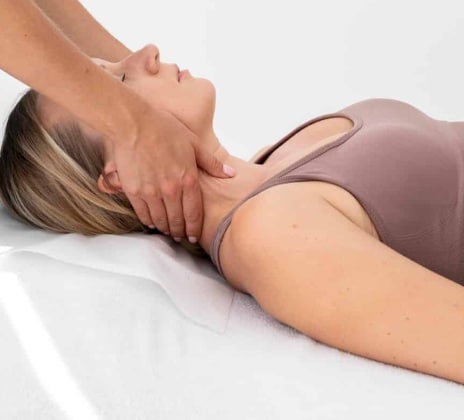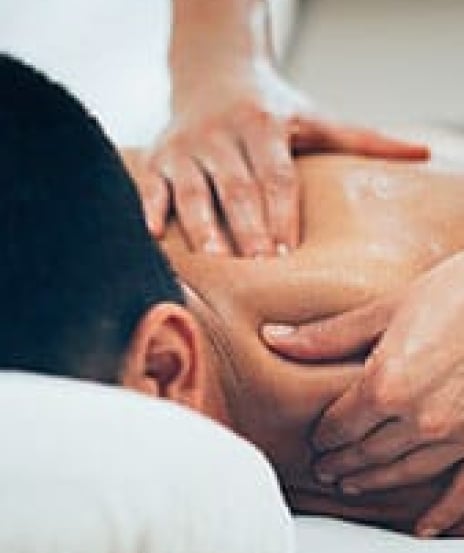Remedial Massage
Therapeutic massage to ease tension, support recovery, and enhance mobility.
Therapeutic massage to ease tension, support recovery, and enhance mobility.
Remedial massage focuses on releasing tight muscles and improving circulation to aid recovery. It can help reduce pain, enhance flexibility, and support overall wellbeing. At Our Chiro Brisbane, remedial massage is often combined with chiropractic care to optimise soft-tissue function and ease daily tension.
Remedial massage is a targeted form of soft-tissue therapy used to relieve muscle tension, improve circulation, and support recovery from pain or injury. At Our Chiro Brisbane, remedial massage complements chiropractic care by addressing the muscular and connective tissue components that often contribute to stiffness or restricted movement.
The treatment focuses on identifying areas of tension, tightness, or imbalance and applying techniques that help release these restrictions. Pressure and methods are adjusted to the patient’s needs, ranging from gentle relaxation work to deeper, more specific muscle release. The goal is to restore normal tissue tone, promote healing, and improve overall function.
Remedial massage may assist with:
Sessions may include techniques such as deep tissue massage, myofascial release, or stretching. They can be used as a standalone treatment or combined with chiropractic care to enhance recovery and flexibility.
At Our Chiro Brisbane, remedial massage is delivered within a structured, evidence-informed approach aimed at improving comfort, movement, and muscular balance so patients can stay active and perform at their best.







Remedial massage is a type of massage therapy that focuses on treating musculoskeletal issues, such as muscle tension, pain, and injuries. It involves assessing and treating specific muscles, tendons, ligaments, and connective tissues to alleviate pain, improve function, and promote healing.
While both types of massage can be relaxing, remedial massage is more targeted and therapeutic. It aims to address specific musculoskeletal problems, whereas relaxation massage focuses primarily on promoting general relaxation and well-being.
Remedial massage offers a wide range of benefits, including:
Remedial massage can be beneficial for various conditions, including:
Your first session will typically involve a consultation and assessment to understand your health history and concerns. The massage therapist will then develop a personalized treatment plan. The massage itself may involve a variety of techniques, such as deep tissue massage, trigger point therapy, myofascial release, and stretching.
Sessions typically range from 30 to 60 minutes, depending on your individual needs and the areas being treated.
The frequency of treatment will depend on your condition and goals. Your therapist will recommend a treatment plan that’s right for you. It may range from weekly sessions to monthly maintenance massages.
Wear comfortable clothing that allows for easy movement. You may be asked to undress to your level of comfort, but you will be properly draped with towels to ensure privacy.
Many health insurance plans offer coverage for remedial massage, especially if it’s part of a treatment plan for a specific condition. Check with your insurance provider to confirm your coverage.
Some techniques may cause temporary discomfort, but the massage should not be painful. Your therapist will communicate with you throughout the session and adjust the pressure as needed.
Inform your therapist of any injuries or conditions you have before the massage. They will tailor the treatment to your specific needs and avoid any contraindicated areas.
Yes, remedial massage can be beneficial during pregnancy, but it’s essential to inform your therapist so they can modify the treatment accordingly. Certain techniques and areas may be avoided during pregnancy.
You can book an appointment online through our website or by contacting our clinic directly. We look forward to helping you achieve optimal health and well-being through remedial massage therapy.
Remedial Massage is a form of therapeutic bodywork that focuses on assessing and treating muscle tension, stiffness, and soft tissue restrictions. Within chiropractic care, it is often used to complement spinal adjustments and other manual therapies by preparing the body’s muscles and connective tissues for improved mobility and alignment.
A remedial massage therapist uses a combination of techniques such as deep tissue work, stretching, and trigger point release to address specific areas of tightness or imbalance. These techniques aim to improve circulation, ease muscular discomfort, and support the body’s natural repair processes. By reducing tension in overactive muscles and stimulating weaker or inhibited areas, remedial massage helps restore balance across the musculoskeletal system.
People sometimes seek remedial massage for a variety of reasons: postural stress, repetitive strain, sports-related tension, or recovery after injury. It can help increase flexibility, support joint movement, and reduce the physical effects of long periods of sitting or standing. In some cases, it may also contribute to better sleep quality and reduced stress by promoting relaxation and calming the nervous system.
In a chiropractic setting, remedial massage can be integrated before or after adjustments. When performed beforehand, it helps loosen muscles and prepare the body for alignment work. When performed afterwards, it helps maintain the results of the treatment and prevent muscles from reverting to tight patterns.
At Our Chiro Brisbane, every remedial massage session is tailored to the individual, taking into account health history, lifestyle, and treatment goals. While it is not intended to diagnose or cure medical conditions, it serves as an important part of a holistic approach to musculoskeletal health.



What does a chiropractor do?
A chiropractor diagnoses and treats musculoskeletal conditions, which involve the joints, muscles, and neural tissue throughout the body. Chiropractors typically use adjustments to help restore joint function and relieve pressure on surrounding tissues.
We commonly see patients with headaches, migraines, back pain, neck pain, mid-thoracic pain, knee pain, or shoulder pain—often from sport or postural issues.
During a typical consultation, you’ll come in for a medical history review, followed by an orthopaedic examination and, if needed, a neurological exam. We’ll then perform a physical assessment to identify the cause of your condition. Imaging such as X-rays or MRI scans may be requested, usually through an external provider.
Treatment often includes gentle adjustments or joint mobilisations to restore movement and reduce pain. We may also use other therapies such as dry needling, Kinesio taping, rigid taping, or soft tissue work as part of your care plan.
Ease tension and improve recovery with a professional remedial massage at Our Chiro Brisbane. Book online or contact us to discuss your goals.